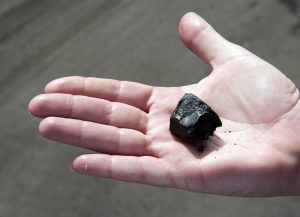Print a Sign-In Sheet | Spanish Version Coming Soon
Combustible dust is a particulate solid that presents a fire or deflagration hazard when suspended in air or some other oxidizing medium over a range of concentrations, regardless of particle size or shape. An explosion is an exothermal chemical process that gives way to sudden and significant pressure rise.
A dust explosion is a fast combustion of dust particles suspended in the air in an enclosed location. The dust particles may be as small as a grain of sand. Dust presence of 1/32” (thickness of paperclip) over 5% of an area and covering the floor may be sufficient to produce a dust cloud of favorable concentration.
A combustible dust explosion will occur if the following five elements are present: oxygen, heat, fuel, dispersion, and confinement. These factors are known as the Dust Explosion Pentagon, and if just one of these elements is missing, an explosion will not occur. A dust explosion can result in serious injury and even death to employees. Furthermore, significant property damage may occur. It is imperative employers educate employees on the hazards of combustible dust and take steps to control it.
Dust of Concern:
- Metal processing;
- Wood;
- Coal;
- Plastic;
- Biosolids;
- Textiles;
- Chemical manufacturing;
- Agriculture products such as grain;
- Fertilizers;
- Pesticides;
- Paper & pulp; and
- Rubber manufacturing.
Equipment that may generate dust:
- Bag openers;
- Blenders/mixers;
- Dryers;
- Pneumatic conveyors;
- Grinders;
- Silos/Grain Bins;
- Hoppers;
- Hoses;
- Loading spouts; and
- Dust Collectors (have the highest number of incidents).
Ignition Sources:
- Static electricity;
- Smoking;
- Open flames;
- Hot work;
- Sparks & friction;
- Heating systems;
- Faulty electrical equipment;
- Faulty electrical wiring; and
- Heated surfaces.
Control Methods:
- Inspect for dust frequently (open & hidden areas).
- Practice good housekeeping.
- Perform frequent cleaning.
- Use cleaning methods that do not produce dust clouds.
- Install dust collection systems.
- Use vacuum systems approved for dust collection.
- Control ignition sources.
- Implement a dust hazard awareness program and training.
- Install Class II Electrical Equipment.
- Use Hot Work permits.
- Implement grounding and bonding.
- Prohibit recycling of exhaust air.
- Place relief valves away from dust deposits.
Damage Control:
- Isolate the hazard using a barrier or by distance.
- Install pressure venting.
- Install fire suppression systems.
- Install relief valves.
- Practice preventative maintenance.
- Implement explosion prevention systems.
- Implement an emergency action plan (EAP).
- Keep emergency exit routes clear.
OSHA Standards:
- Currently, no specific OSHA standard for combustible dust exists.
- OSHA may inspect facilities through their Combustible Dust National Emphasis Program (NEP).
- Citations may be issued based on other OSHA standards:
- 22—Housekeeping.
- 272—Grain handling.
- General Duty Clause—Section 5(a)(1) of the OSHA Act.
- 307—Hazardous Locations Electrical.
- 1200—Hazard Communication.
- 269—Electric Power Generation, Transmission & Distribution.
- 265—Sawmills.
- 261—Pulp, paper, and paperboard mills.
Source: United States Department of Labor. Occupational Health & Safety Administration. OSHA Fact Sheet. Hazard Alert: Combustible Dust Explosions. Retrieved from: https://www.osha.gov/Publications/osha3791.pdf
KEMI does not assume liability for the content of information contained herein. Safety and health remain your responsibility. This information is to be used for informational purposes only and not intended to be exhaustive or a substitute for proper training, supervision or manufacturers’ instructions/recommendations. KEMI, by publication of this information, does not assume liability for damage or injury arising from reliance upon it. Compliance with this information is not a guarantee or warranty that you will be in conformity with any laws or regulations nor does it ensure the absolute safety of any person, place or object, including, but not limited to, you, your occupation, employees, customers or place of business.

